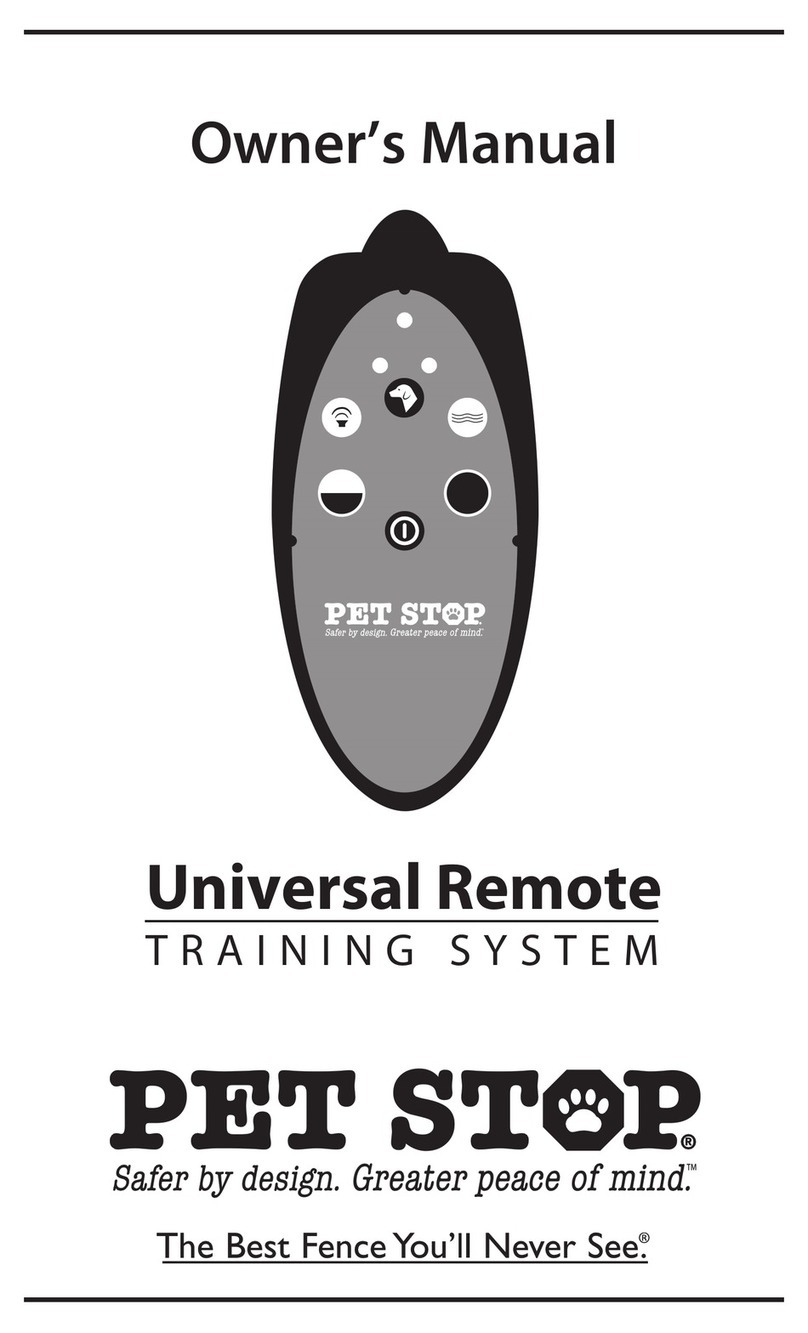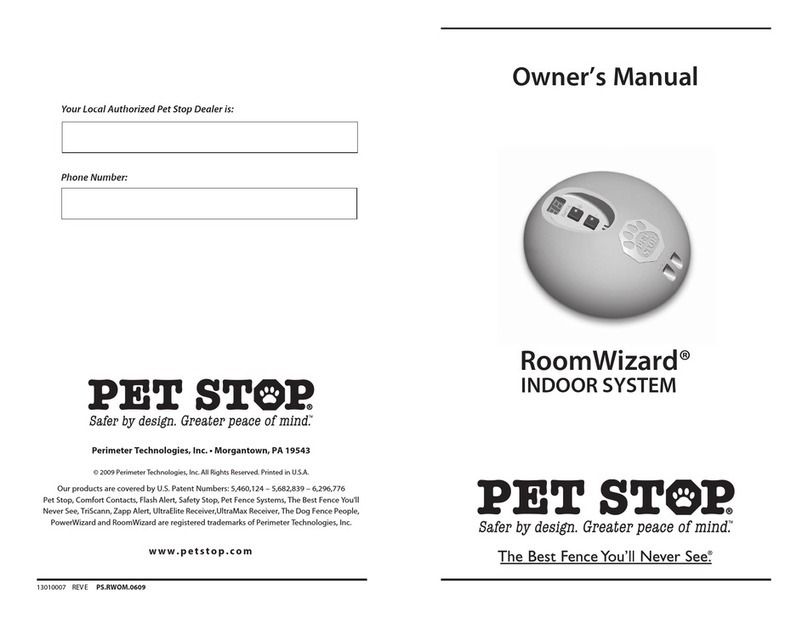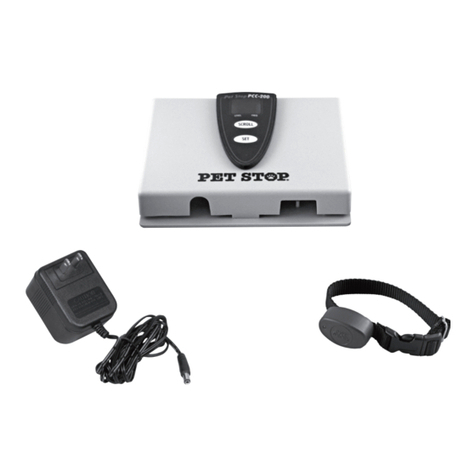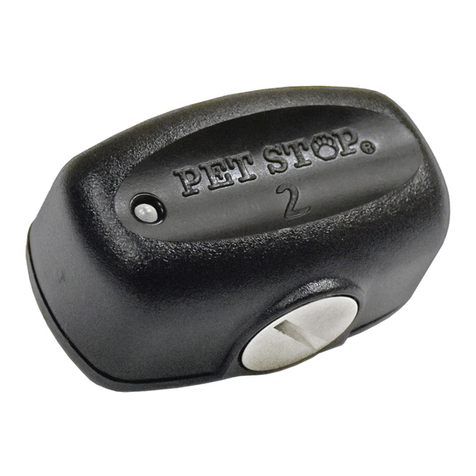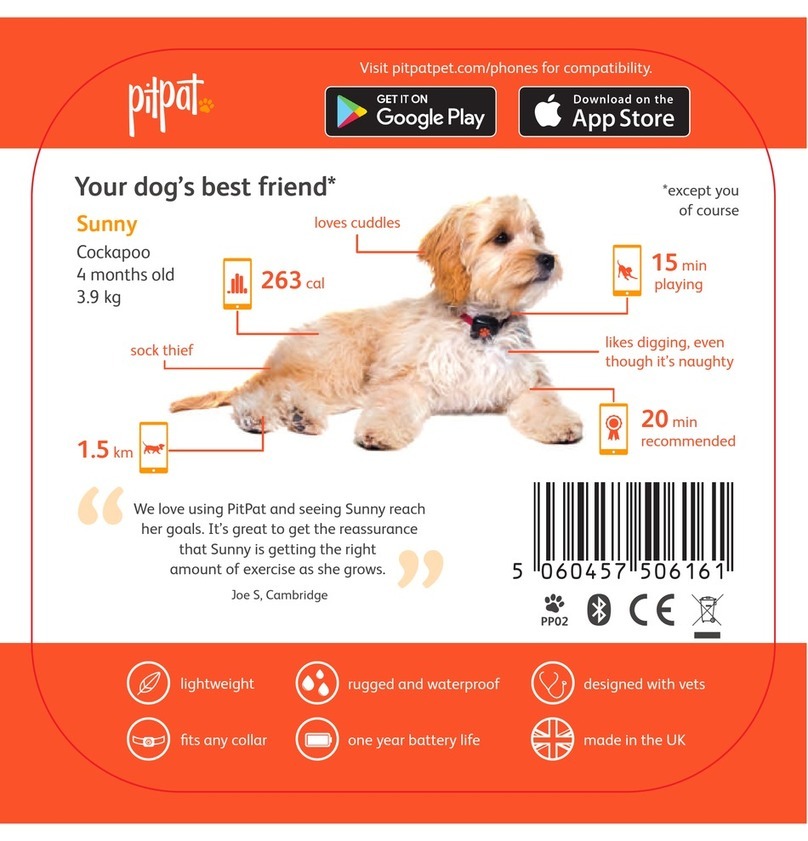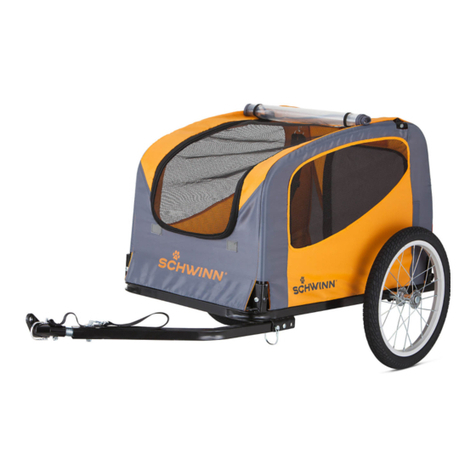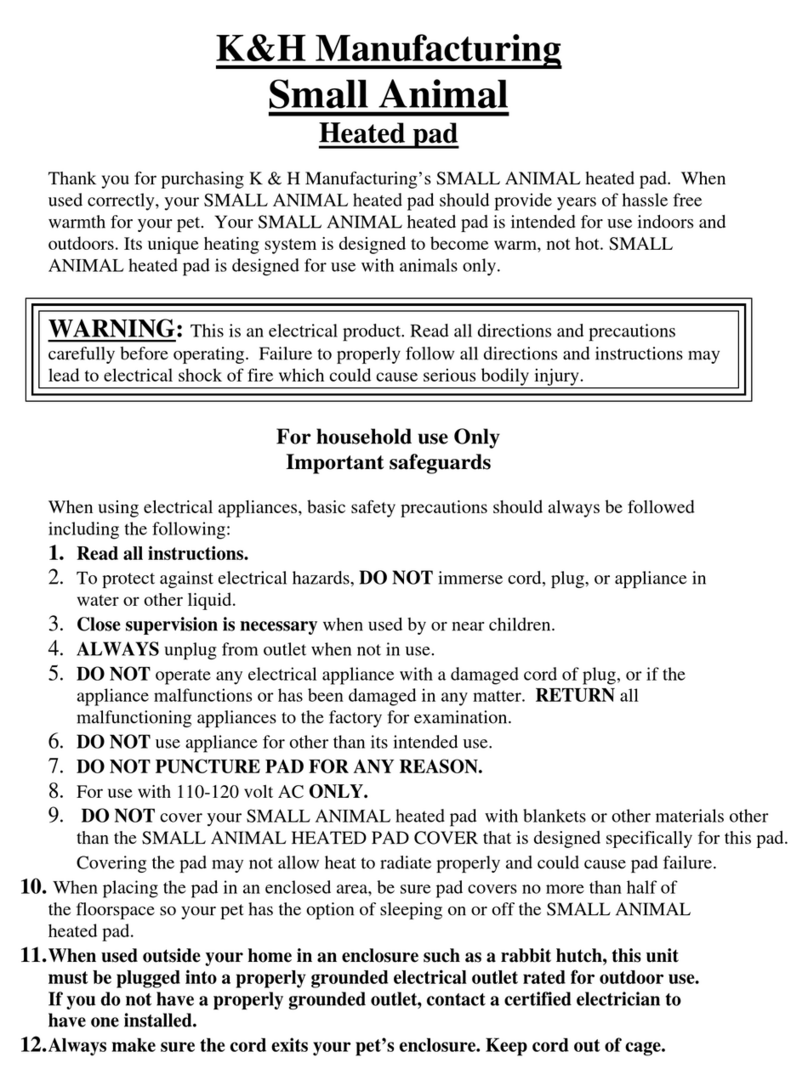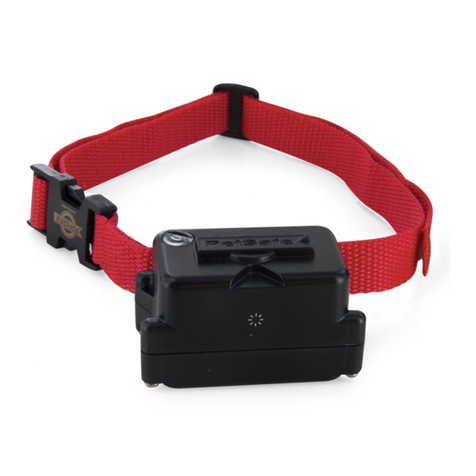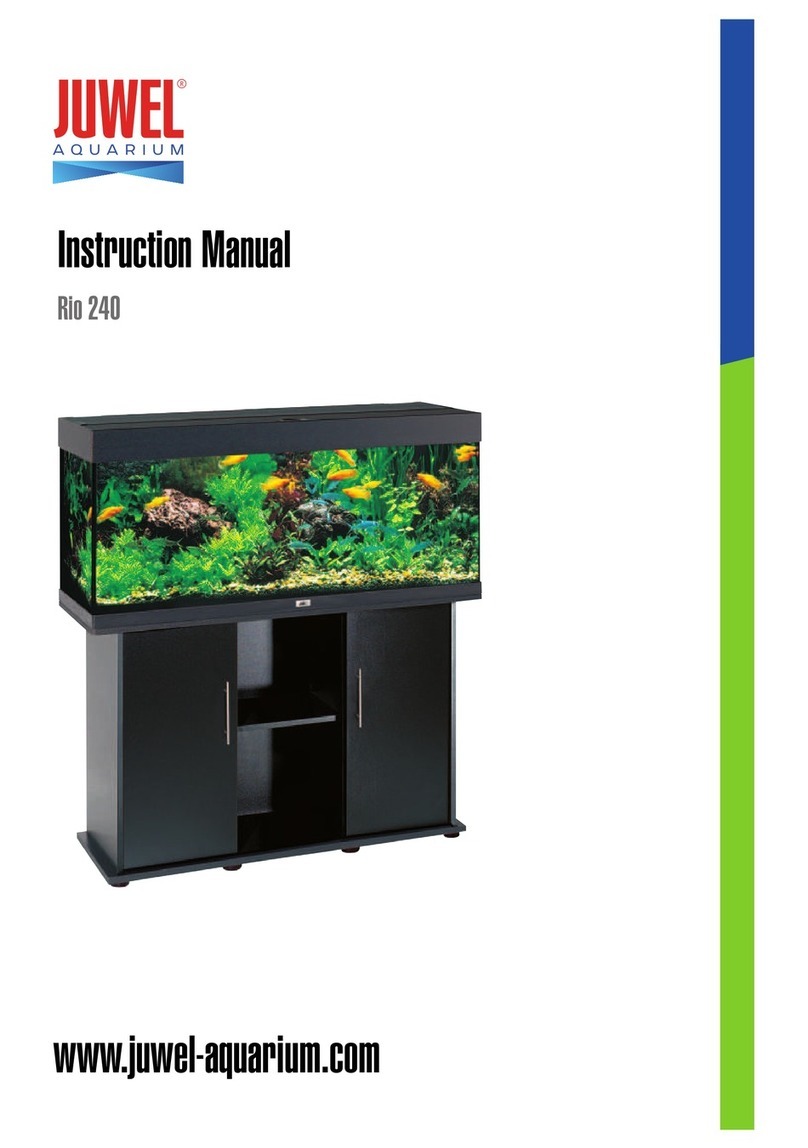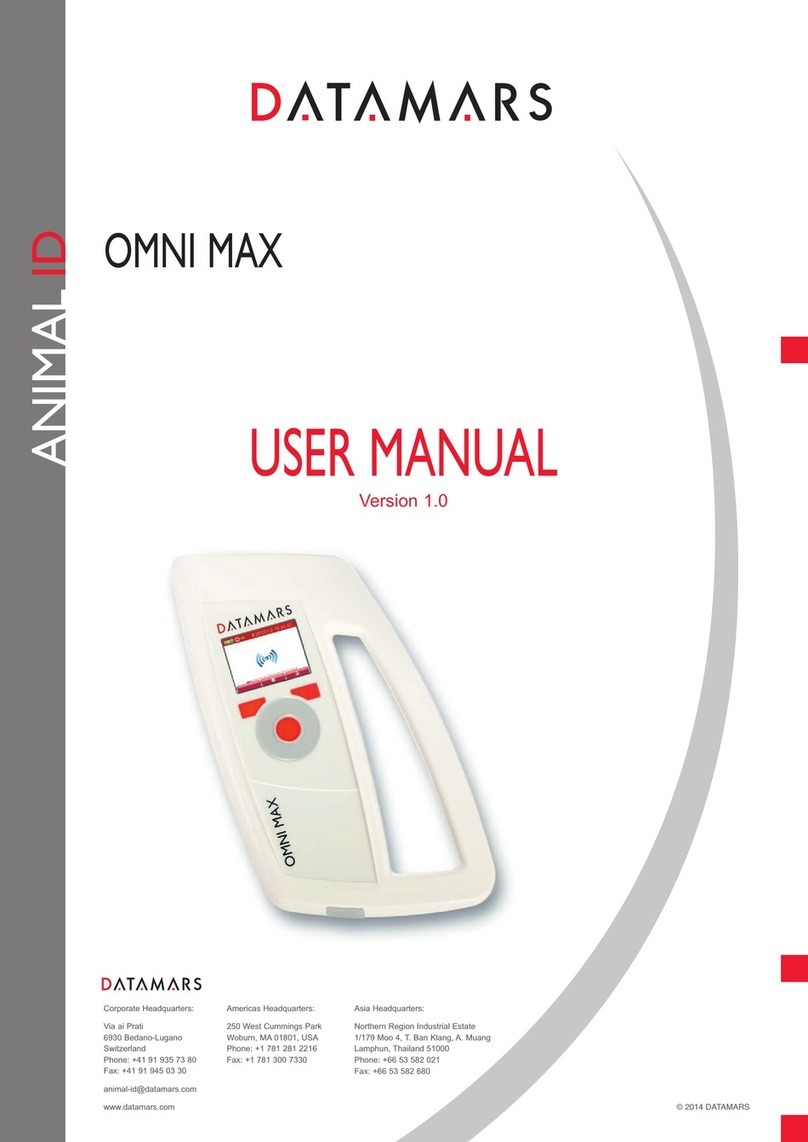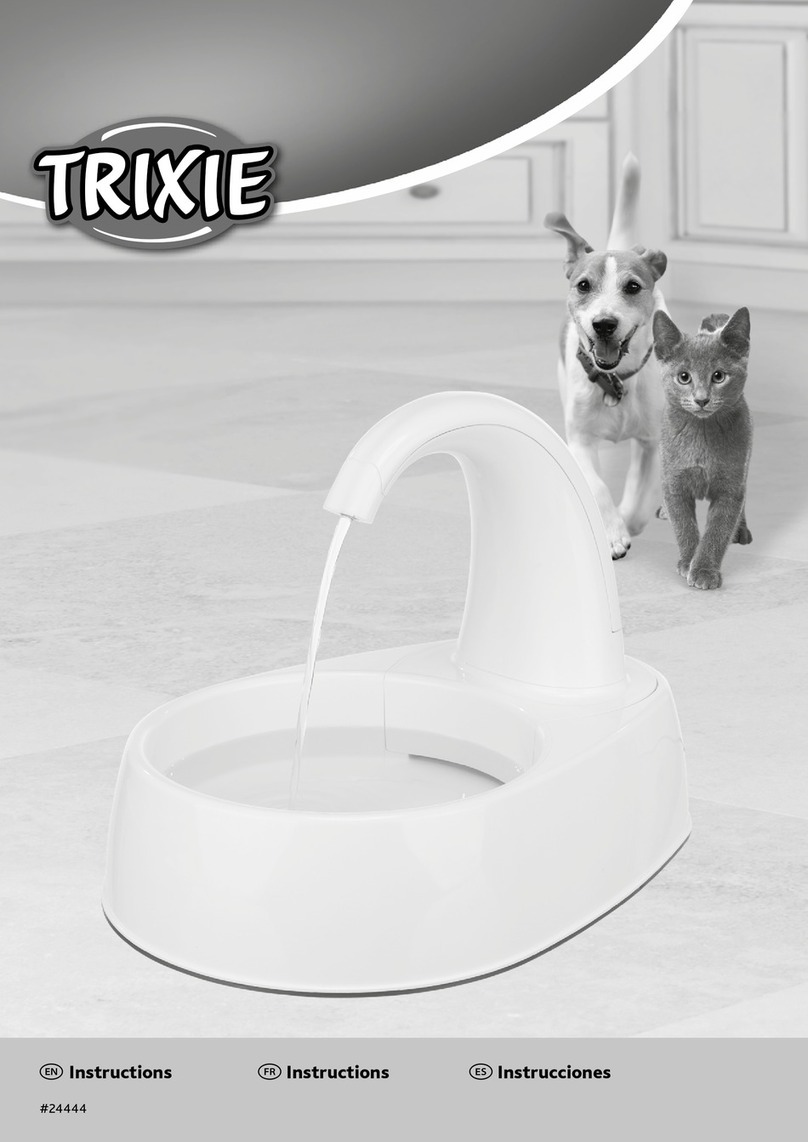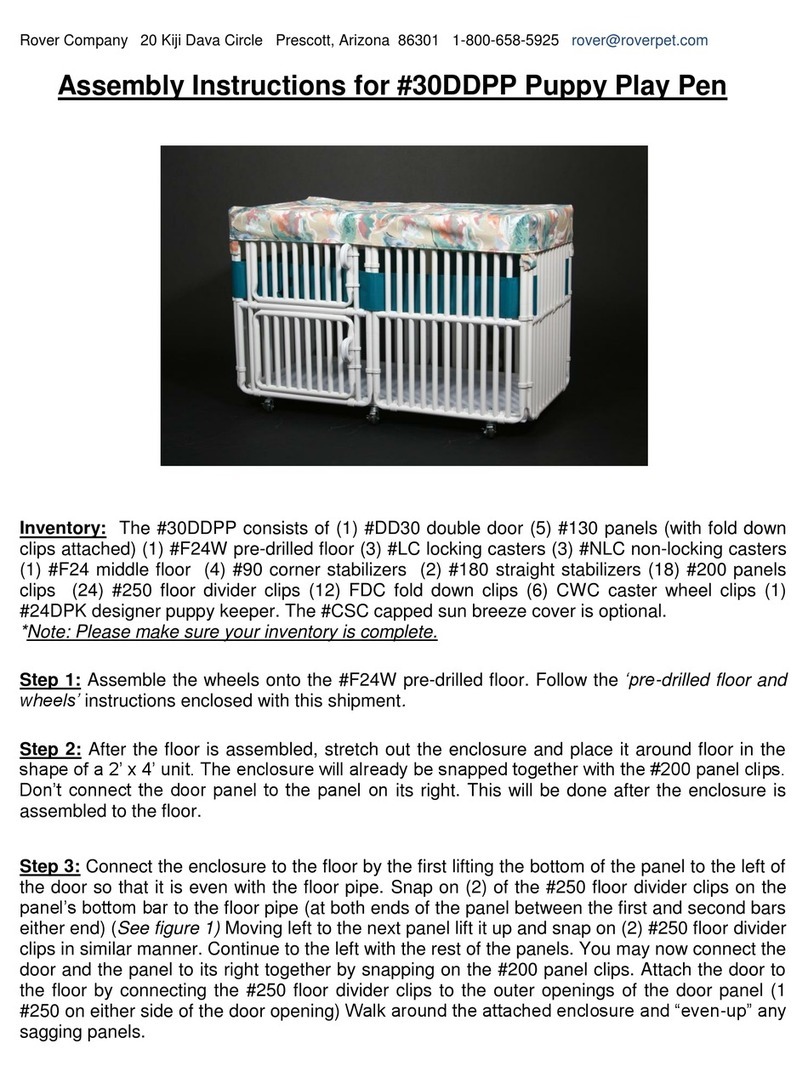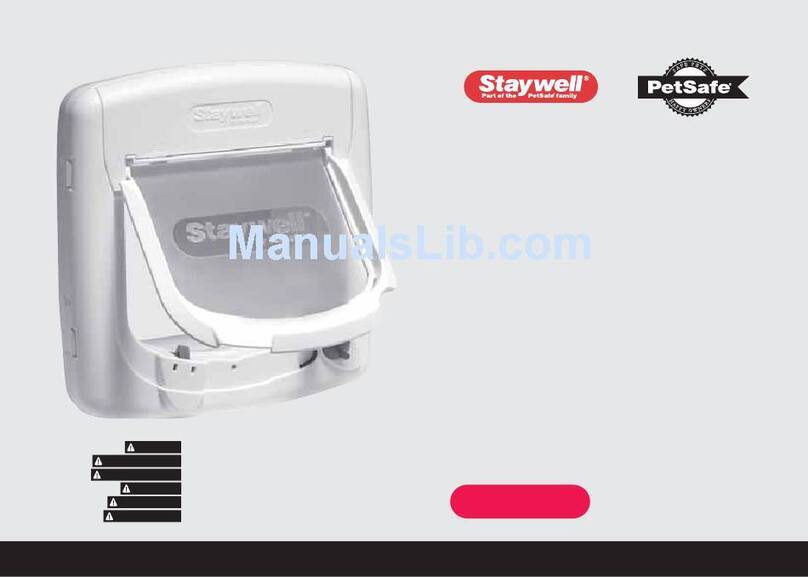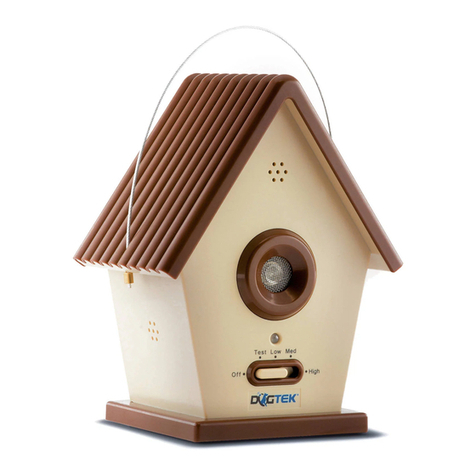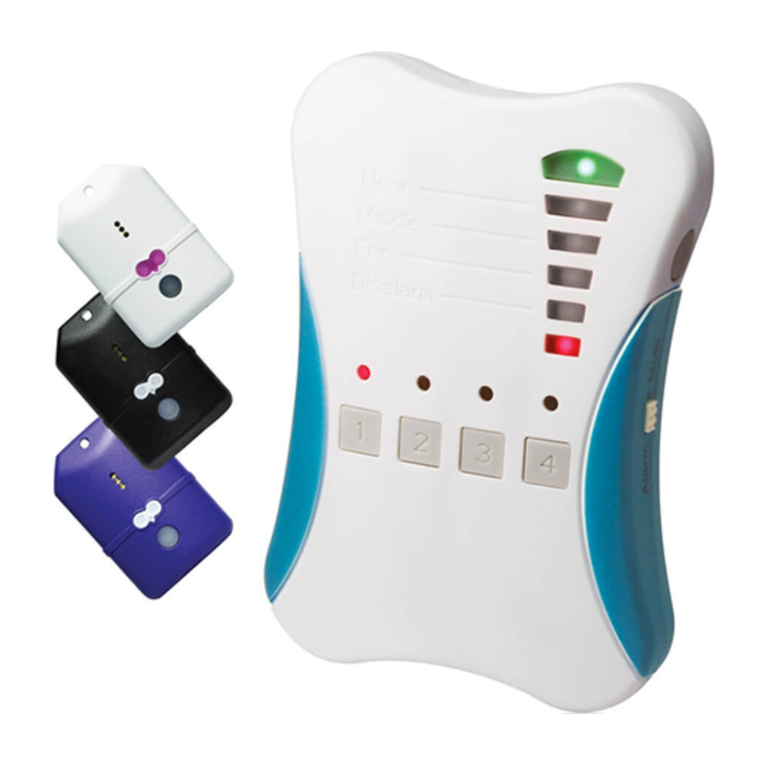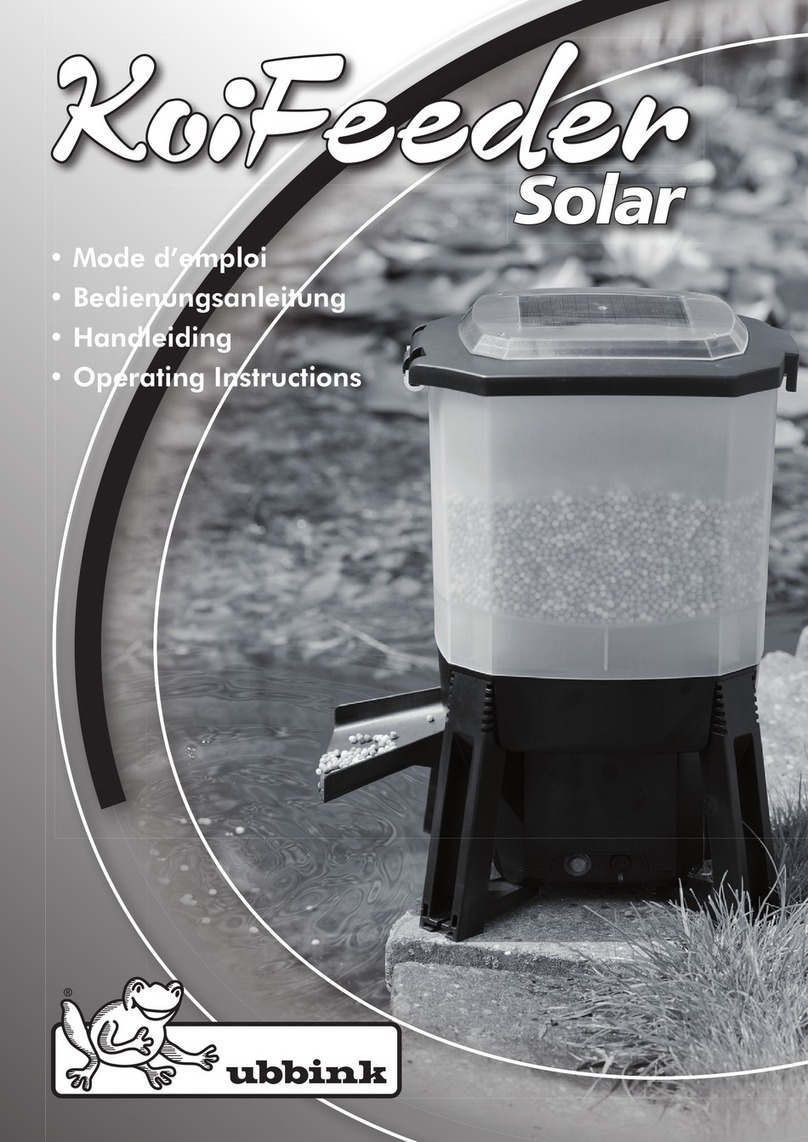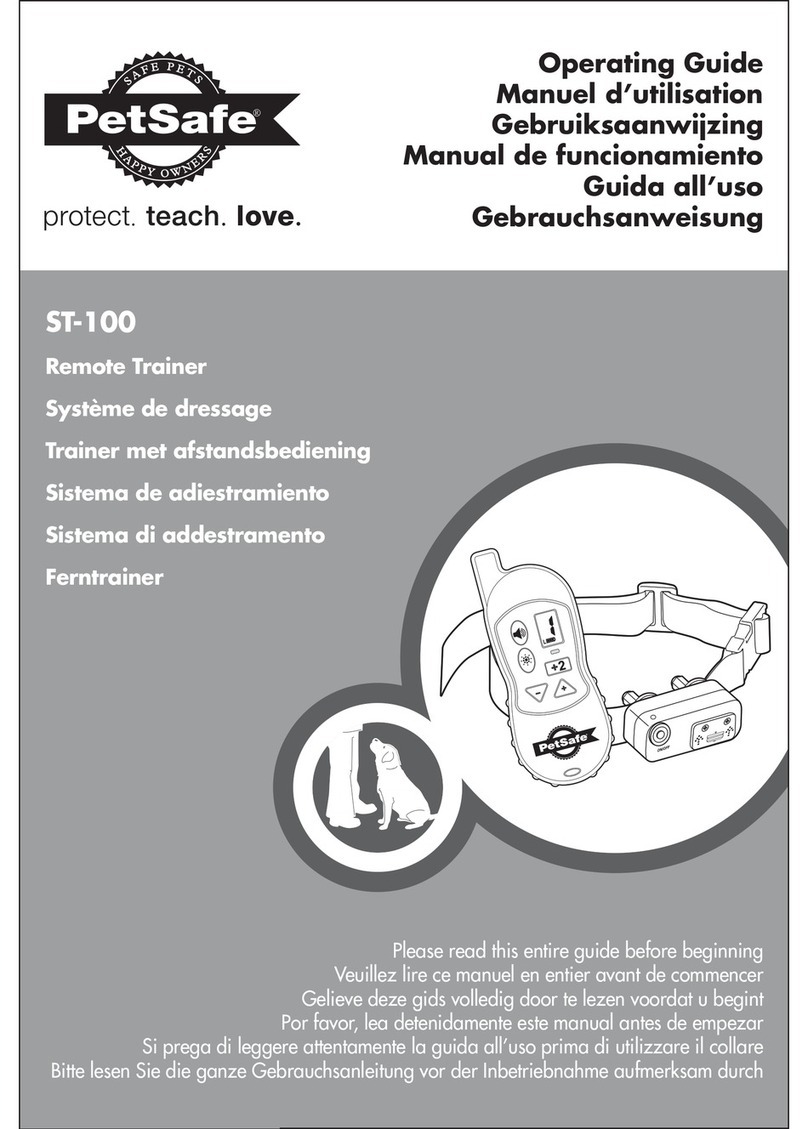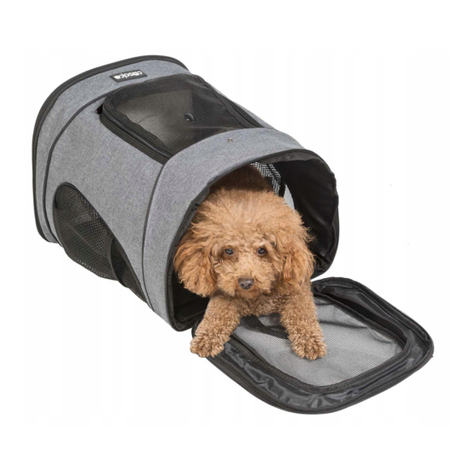
8 | P a g e
Switches 2 and 3 set the packet length. This controls the length of
the transmitter signal burst. Burst lengths of ¼, ½, ¾ and 1 second
can be selected. A shorter burst length (i.e. ¼ second) will yield a
longer transmitter battery life.
Settings:
2 ON, 3 ON ¼ second –use with Receiver set to “51”, “21”
2 OFF, 3 ON ½ second –use with Receiver set to “52”, “21”
2 ON, 3 OFF ¾ second –use with “51” and “22” ***
2 OFF, 3 OFF 1 second –use with “52” and “22” ***
*** Will result in very poor transmitter battery life! Only use if a
correction is required AND a delay must be used between tone and
correction. Otherwise a shorter duration setting can be used and
only a tone will be emitted by receiver. If a correction is also
required, it is highly recommended to disable the receiver’s delay
(set receiver to “21”).
Battery Life:
To maximize transmitters battery life, program receiver for setting
“51” to disable duty cycling, and place transmitter switches 2 and 3
in the on position and switches 1 and 4 in the off position. This will
minimize the amount of time the transmitter needs to produce
signal. Adjust range control for a minimally acceptable signal. If a
physical correction is required set the receiver to no delay (“21”).
